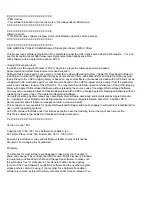
Creating Home Directories
90
Snap Server Administrator Guide
Creating Home Directories
The Home Directories feature creates a private directory for every local or Windows
domain user that accesses the system. When enabling Home Directories (from the
Security > Home Directories
page), the administrator creates or selects a directory to
serve as the home directory root. When a user logs in to the server for the first time
after the administrator has enabled Home Directories, a new directory named after
the user is automatically created inside the home directory root, and is configured
to be accessible only to the specific user and the administrator.
Depending on the protocol, home directories are accessed by users either via a user-
specific share, or via a common share pointing to the home directory root.
Home directories are supported for SMB, NFS, AFP, HTTP/HTTPS, and FTP. They
are accessed by clients in the following manner:
• For SMB, AFP, and HTTP/HTTPS, users are presented with a virtual share
named after the username. The virtual share is visible and accessible only to the
user. Users are not limited only to their virtual shares; all other shares on the
server continue to be accessible in the usual fashion.
• For NFS, the home directory is exported. When a user mounts the home directory
root, all home directories will be visible inside the root, but the user’s home
directory will be accessible only by the user and the administrator.
Note
If desired, UNIX clients can be configured to use a Snap Home Directory as
the local user’s system home directory. Configure the client to mount the home
directory root for all users, and then configure each user account on the client to
use the user-specific directory on the Snap Server as the user’s home directory.
• For FTP, local users will automatically be placed in their private home directory
when they log in. Access to the home directory is facilitated through a share
pointing to a parent directory of the home directory, so users can still change to
the top-level directory to access other shares.
If ID Mapping is enabled, domain users and local users mapped to the same user
will be directed to the local user’s home directory.
Windows ACLs
Introduced in v5.0, GuardianOS now fully supports Windows NTFS-style file
system ACLs, including configuration, enforcement, and inheritance models. Inside
Windows/Mixed SnapTrees, files created and managed by Windows clients have
the Windows security personality and behave just as they would on a Windows
server. Clients can use the standard Windows NT, 2000, 2003, XP, or Vista interface
to set directory and file permissions for local and Windows domain users and
groups on the Snap Server.
Содержание 5325301656 - Snap Server 14000 NAS
Страница 2: ......
Страница 76: ...Disks and Units 62 Snap Server Administrator Guide ...
Страница 92: ...Creating iSCSI Disks 78 Snap Server Administrator Guide ...
Страница 108: ...Security Guides 94 Snap Server Administrator Guide ...
Страница 144: ...Unicode and Expansion Arrays 130 Snap Server Administrator Guide ...
Страница 164: ...Off the Shelf Backup Solutions for the Snap Server 150 Snap Server Administrator Guide ...
Страница 172: ...Scripts in SnapCLI 158 Snap Server Administrator Guide ...
Страница 206: ...192 Snap Server Administrator Guide ...
Страница 224: ...210 Snap Server Administrator Guide ...
















































